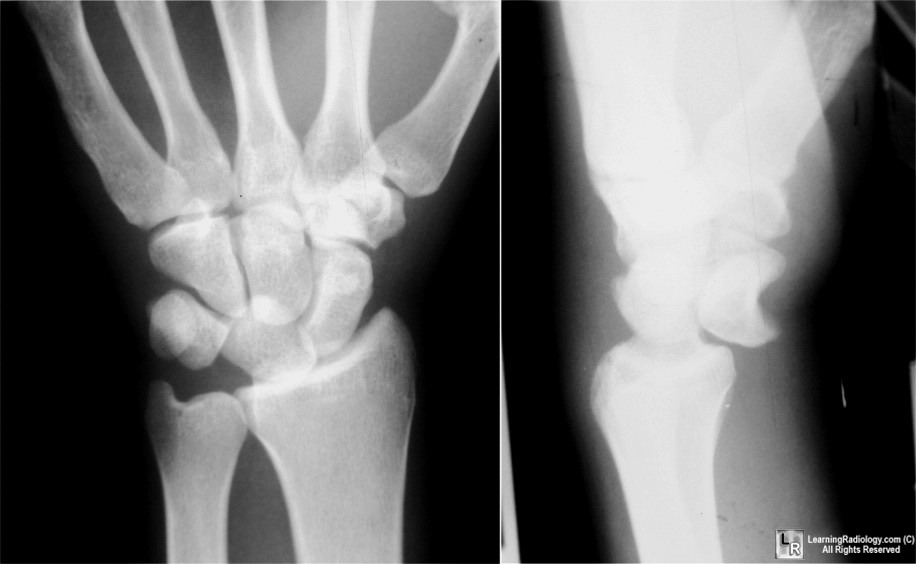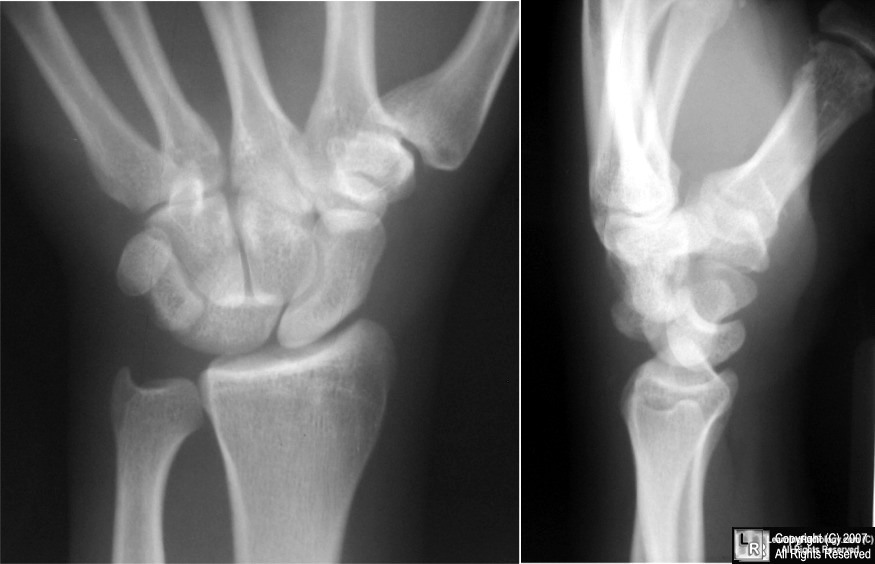Carpal Instabilities
|
Lunate and Perilunate Dislocation
- Carpal dislocations described by extent of ligamentous injury (Mayfield)
- Stage I
- Isolated rotatory subluxation of scaphoid
- Mechanism: acute dorsiflexion of wrist
- May be associated with rheumatoid arthritis
- Characterized by increased distance between scaphoid and lunate > than 2 mm (Terry Thomas sign)
- Scaphoid ring sign – ring-shaped shadow of cortex of distal pole of scaphoid seen on end
- Associated more than 50% of the time with distal radial fractures
- Isolated rotatory subluxation of scaphoid
- Stage II
- Dislocation or subluxation of capitate
- Exceedingly rare
- Dislocation or subluxation of capitate
- Stage III
- Perilunate dislocation
- Triquetrial and scaphoid malrotation
- Result of a fall on an outstretched, hyperextended hand
- Relatively rare
- Occurs when the lunate maintains normal position with respect to the distal radius while all other carpal bones are dislocated posteriorly
- Very commonly associated with a scaphoid waist fracture
- Sometimes ulnar styloid as well
- Lunate appears triangular in shape on frontal view
- Lunate rotates forward slightly on lateral view
- In lateral view, all other carpal bones are dislocated posterior with respect to lunate
- Perilunate dislocation
- Stage IV
- Lunate Dislocation
- Most severe of carpal instabilities
- Most commonly associated with a trans-scaphoid fracture
- Involves all the intercarpal joints and disruption of most of the major carpal ligaments
- Produces volar dislocation and forward rotation of lunate
- Concave distal surface of lunate comes to face anteriorly
- Capitate drops into space vacated by lunate
- Capitate and all other carpal bones lie posterior to lunate on lateral radiograph
- Triangular appearance of lunate on frontal projection
- Lunate Dislocation
- Stage I


No comments:
Post a Comment